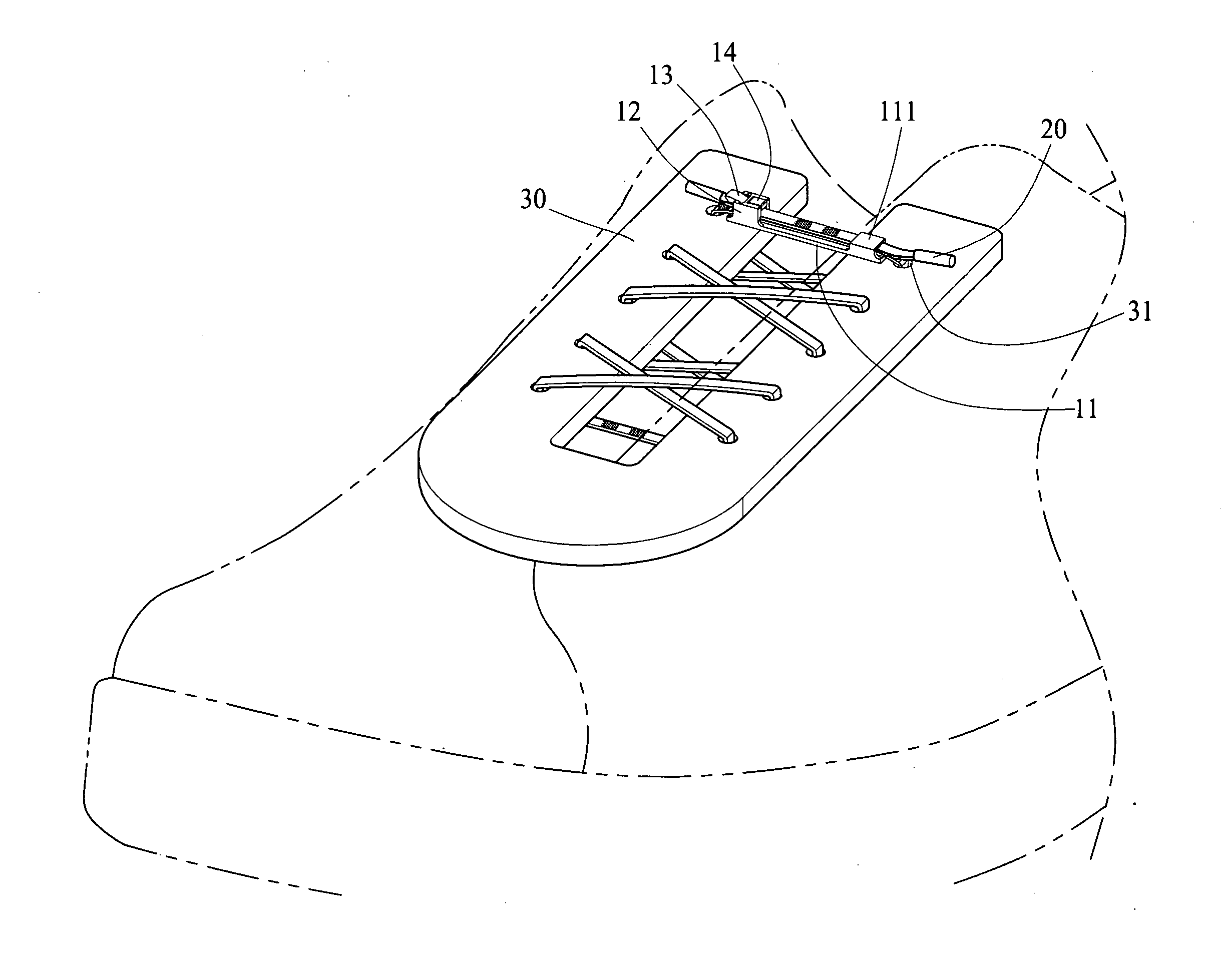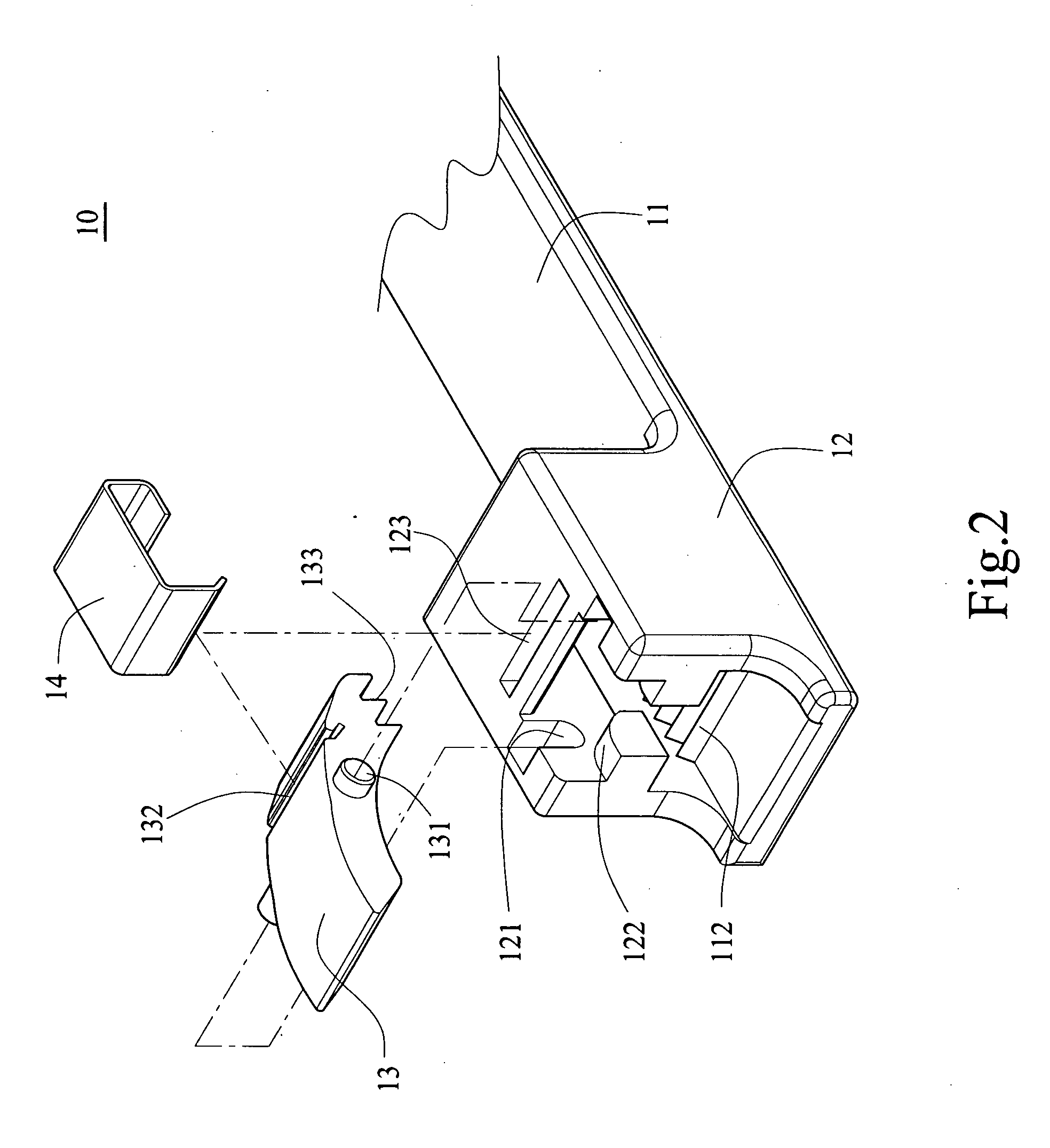Shoelace with shoelace fastener
a technology of shoelace and fastener, which is applied in the direction of shoelace fastening, fastening, footwear, etc., can solve the problems of time and effort, the shoelace may easily split from end to end, and cannot be securely tied, so as to improve the convenience and adjust the tightness of the shoelace quickly, maintain the tightness of the shoelace, and simplify the procedure of tying the shoela
- Summary
- Abstract
- Description
- Claims
- Application Information
AI Technical Summary
Benefits of technology
Problems solved by technology
Method used
Image
Examples
Embodiment Construction
[0039]The present invention will become apparent with the detailed description of the following embodiments with accompanied drawings as follows.
[0040]With reference to FIGS. 1 to 4 for a three-dimensional view, a partial enlarged view, a schematic view of a shoelace fastener installed onto a surface with lace holes, and a schematic view of adjusting a shoelace in accordance with a first preferred embodiment of the present invention respectively. The shoelace fastener 10 is provided for clamping and fixing a shoelace 20 (particularly a common fabric cloth) to maintain the tightness of the shoelace 20, and the shoelace fastener 10 comprises a first lace 11, a first retaining base 12, a ratchet 13, and an elastic plate 14.
[0041]Wherein, the first lace 11 is substantially a flat structure in the shape of a long strip, and includes a collar 111 disposed at an end of the first lace 11 for passing the shoelace 20.
[0042]The first retaining base 12 is disposed at another end of the first la...
PUM
 Login to View More
Login to View More Abstract
Description
Claims
Application Information
 Login to View More
Login to View More - R&D
- Intellectual Property
- Life Sciences
- Materials
- Tech Scout
- Unparalleled Data Quality
- Higher Quality Content
- 60% Fewer Hallucinations
Browse by: Latest US Patents, China's latest patents, Technical Efficacy Thesaurus, Application Domain, Technology Topic, Popular Technical Reports.
© 2025 PatSnap. All rights reserved.Legal|Privacy policy|Modern Slavery Act Transparency Statement|Sitemap|About US| Contact US: help@patsnap.com



